January 2014 has been quite a significant month here. Forgive me for getting all nostalgic for the “good old days” and reminiscing a bit – it’s not without due cause.
Thirty years ago this month, fresh out of school and barely a man (I’d only just turned 18), I joined what was Telecom Australia (nee the Postmaster-General’s Department) as an “Apprentice Technician, Telecommunications”. (The job title had been recently renamed from Technician In Training as apparently the acronym had become inappropriate).
First year of the four year apprenticeship was all in-house training, at the end of which you then chose a specialisation. I opted for PABX Maintenance.
Wind forward 30 years and I’m still in the industry, still working in what we might loosely term “telephony”, although it’s changed and evolved a bit.
Then 4 weeks out from my 30th anniversary I had bestowed upon me a Microsoft award as a “Most Valuable Professional” for my contribution to the Lync community, making me the fourth Lync MVP in the country.
A Retrospective
Needless to say, this entire month or so has involved quite a lot of reflection on what’s passed in the first 2/3 (?) of my working life.
Your “business telephony” system in the office no longer cables like a giant electric octopus, with a pair of wires from every desk back to the PABX room. The speech of your phone call is no longer superimposed upon a direct current supply all the way back to the PABX, but now exists as packets of data in amongst who-knows-what other traffic. Your “phone” might now actually be a desktop computer, and the solution it belongs to lets you make video calls, conduct a high-definition video conference on demand, as well as previously un-heard-of innovations like “CallerID” and click-to-call. And with this “presence” business you now know the person you want to speak to is actually there (and not on the phone or in a meeting) before you bother attempting the call!
1984 |
2014 |
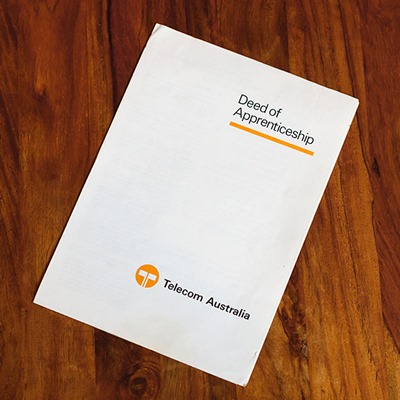 |
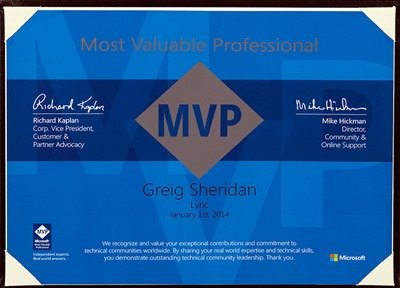 |
| My indenture paperwork | My Lync MVP certificate |
Having signed my Deed of Apprenticeship, Telecom owned my soul for 4 years. I survived almost 12 before jumping ship to follow the Good Ship Nortel, before she hit a nasty iceberg in January 2009 and sank with many lives and the occasional career lost.
The bulk of my worklife has been spent supporting and providing pre-sales engineering for the Nortel PABX family. Nortel’s “Innovative Communications Alliance” with Microsoft introduced me to Office Communications Server 2007 (OCS), and I was instantly hooked by its out-of-the-box Computer Telephony Integration – something that traditional PABX vendors charged an arm and a leg for and that remained out of reach of everyone bar the giant corporates and telcos.
I became my company’s “UC Evangelist”, and eventually jumped ship (to continue the nautical metaphor), leaving the relative comfort of old-world telephony and joining the Microsoft partner ecosystem, where I’ve been happily ensconced since. I now spend a lot of time turning my beloved old Nortel systems off, having replaced them with Lync. The PABX at home was just one of those.
Communication Systems
1984 |
2014 |
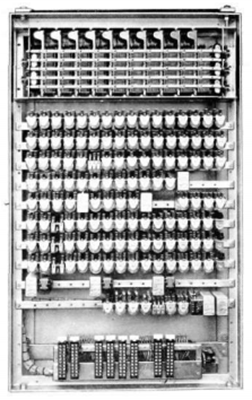 |
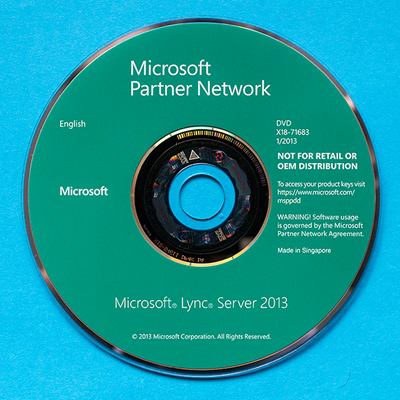 |
| A baby Ericsson crossbar PABX – the ARD526 | Microsoft Lync 2013 |
When I started in PABXs the system often took up an entire room. These were bulky creatures consisting entirely of relays, all running on a 48V DC supply, with open cell batteries running along the length of one wall that you needed to top up with distilled water every so often. Electro-mechanical PABXs had no modems or remote access, and the larger ones all had a special alarm pair back to the local telephone exchange. The PABX applied a resistor across the pair to indicate normal operation and either short-circuited or opened the line to indicate an Urgent or Non-Urgent alarm. (The resistor also meant you received an alarm if the pair went faulty).
Thankfully most of the really early PABX technology had passed by the time I entered the workforce. In the old days of step-by-step PABXs, the “telephone mechanic” wasted no time attending an Urgent alarm as an unattended “release alarm” posed a potential fire risk!
Devices
1984 |
2014 |
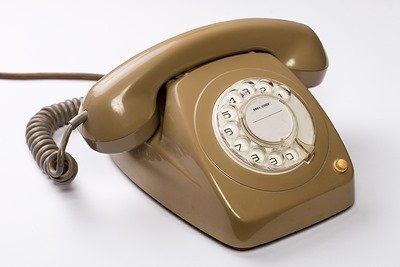 |
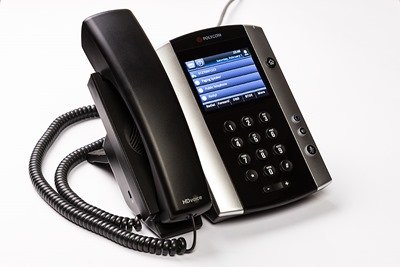 |
| Grey ACF 8021 | The Polycom VVX500, with touch-screen, PoE & Gig-E |
The “800-series” phones were an Aussie innovation, developed by the Australian Post Office Laboratories in Melbourne in conjunction with STC & AWA and introduced in 1962 [Ref1]. They were the standard telephone model in Australia for over 20 years, eventually morphing into an all-plastic construction with an electronic ringer and a decadic or tone (DTMF) keypad, before being replaced in the mid-late 80’s by the soulless “T200”.
This snazzy grey automatic table phone was the basic offering in a PABX environment. The push-button applied an earth or ‘ground’ signal to one side of the line, signalling to the system that you wanted to transfer the call. Timed Loop Break & Hook-Flash were still a little way off. The new electronic PABXs were able to detect the timed breaks, but generally also supported earth-recall as well, which was vital if you were retaining the legacy phones.
It’s probably worth noting at this point that the Australian telephone market in the mid-80s was tightly regulated. You couldn’t buy a phone on the street – the only phones you could get for home were the ones that Telecom rented to you. When they were introduced, pushbuttons were offered at a premium, and I seem to recollect that some of the colour choices cost extra too.
Businesses were able to buy PABXs from approved vendors, but following the system’s installation and an “acceptance handover” process, the ongoing maintenance of the system fell to me and my colleagues at Telecom. This didn’t change until the PABX maintenance market was deregulated here in mid-1988.
One major change in technology was the introduction of CallerID (known as ANI in some other markets) in late 1997 [Ref2]. Until that point having a display on your business phone was a perk reserved for executives and their assistants, and it was a real hard-sell to convince a potential customer to equip the lesser minions with these more expensive handsets. Thankfully the introduction of CallerID changed all that, and just about everyone ended up with a display phone.
Admin Tools
1984 |
2014 |
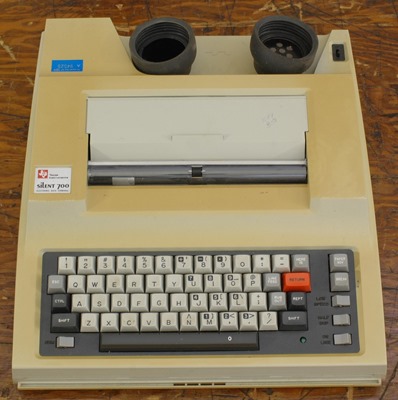 |
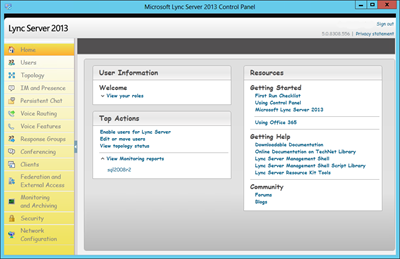 |
| Texas Instruments’ “Silent 700”. (Picture courtesy of Wikipedia). |
Lync Control Panel (specially rendered in Comic Sans for Ken Lasko) |
When I started in the field, you “programmed” the Ericsson crossbar PABXs with resistors and a soldering iron. Others, like the Siemens 60/150 had an integrated LED display and hex keypad, while only the newest all-electronic models had an RS-232 serial port and you typed at them. The Depot had a pool of Silent 700’s, and you borrowed one each time you visited certain systems. It printed on thermal paper and (from memory) ran at a blistering 300 or 1200baud.
The rubber cups behind the printer mechanism were so you could acoustically couple it to your telephone handset. I tried that a few times, but I could never get it to work. It was no big deal, because I think at the time it was only the Rolm PABX that had an inbuilt modem anyway!
In the 1987-ish timeframe these were replaced by the Toshiba laptop, and we were all issued our own. These ran an early version of MS-DOS, had a monochrome LCD display, and everything loaded from a 3+1/2” floppy as they had no hard drive.
Nowadays of course it’s all browser interfaces, command lines and PowerShell. I’ve always enjoyed programming, so am finding PowerShell much like a duck finds water. (My posts in the PowerShell category at the right of the screen will perhaps bear this out).
Test Tools
1984 |
2014 |
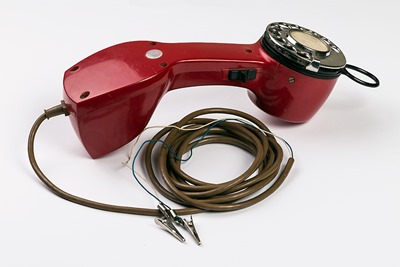 |
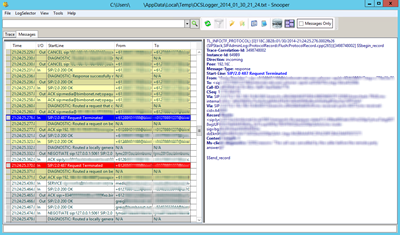 |
| A “Buttinski” | Lync’s “Snooper” diagnostic utility |
On the left is my first ever “butt”, or “buttinski”. Elsewhere in the world it might be called a lineman’s handset, but in Oz it’s a butt. Attach its alligator clips to a pair of wires and you can monitor the state of the line (yes, listening in to calls if you’re feeling so inclined), and by sliding the switch you can “loop” the line, receive dial tone and make or receive a test call.
OK, you might laugh, but that thing still works. It’s normally boxed away in my collection, but it still does the same job it always has. It’s been replaced by a tone-dialling version that’s not going to upset an analog line with ADSL provisioned in parallel, but the buttinski is as relevant to the game today as it was a hundred years ago.
Sure, I spend a lot more time digging through Snooper logs, SIP ladder diagrams and the odd WireShark capture, but try fixing analog telephony without a butt.
Me
1985 |
2014 |
 |
 |
| Me and the boys in the metal workshop at Telecom’s Rhodes training school | Me and the boys at our reunion drinks. Photo: Denis Reedy |
Well, I’m not 18 any more, and I’ve picked up a few tricks along the way. I’ve garnered a few certifications on top of the “Craftsman’s Certificate” that signalled the completion of my apprenticeship, including my Associate Diploma of Electrical Engineering (pka the “E&C”), and a “BOCP”, the formal qualification that lets me touch the bitey bits of a broadcast radio station.
Receiving the Lync MVP award at the start of the year was particularly special to me as it’s not simply a matter of ticking boxes; cause and effect. It’s a recognition of an ongoing contribution to the platform’s community, and for that I am truly honoured.
I’ve been incredibly lucky to have a wonderful guy by my side for almost this entire journey. My “husband” (though not yet legally in this country) Glen is techy as well, which helps when I need to put a funding argument for some new toy business tool. He takes great photos (all the uncredited ones here), and having endured almost 30 years with me is now assured of a posthumous sainthood. It’s been great to share this journey of communications evolution with him, and I’m looking forward to seeing what’s next.
In the grand scheme of things Unified Communications is still quite young, barely out of its infancy, and there are improvements still to be made. Lync continues to grow, consuming everything in its path. Stable-mates Skype and Lync continue on their parallel paths, with another bridge between them expected soon.
Hopefully before I retire we’ll put behind us the need for G.729 and other “no-fi” compressed audio codecs. Packet loss will be a thing of the past, wideband audio and hi-definition video will be ubiquitous & taken for granted. We’ve leapt far past Agent 86’s shoe-phone in the last 30 years, and it seems we’re heading more towards wearable, implantable tech (Futurama’s “eye-Phone” anyone?), powered by our own body chemistry and movement.
Bring it on!
G.
Ref1: From “History of the Telephone in New South Wales”, Jim Bateman, 1980. ISBN 0 959 4787 0 1.
Ref2: Electronic Frontiers Australia, Calling Line Identification & Calling Number Display




Nice walk down memory lane GS… congrats …
Congrats on the MVP. Well deserved.
Hi Grieg,
Ive only just read your blog after a link from LN.
What a great read and trip down memory lane. My Comms journey also began in Telecom in 1984 (Perth) and concluded in 2000 after dereg and I started my own PABX Maint company with a healthy exposure to Nortel switches. I sold out to Northshore Comms in 2011 and had to work for them for 1 year as an AE to satisfy concractual agreements or forfeit 40% of the agreed sale value -to say this was a backwood step is a Massive understatement as I loathed working as an AE in a IT Corporate world. Im now entrenched as a Sales engineer for a Radio company working in the WA Mining sector mixing technical with sales and Im having fun but not as much as when I was PABXing. I will go through your threads as time permits and Im sure Im going to find some nostalgic articles in there. Well done.
Regards
Nick Iellamo